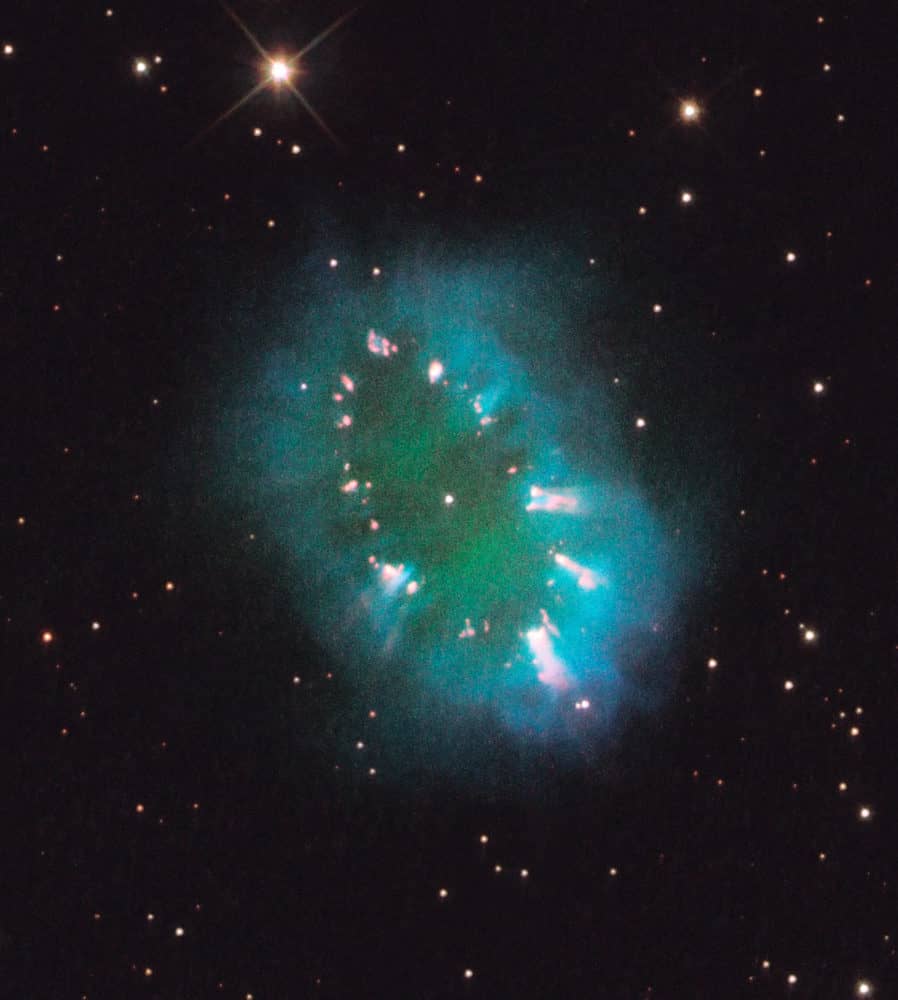Blog
John Milton Cage Jr. (September 5, 1912 – August 12, 1992 LA,CA) was an American composer, music theorist, artist, and philosopher. A pioneer of indeterminacy in music, electroacoustic music, and non-standard use of musical instruments, Cage was one of the leading figures of the post-war avant-garde. Critics have lauded him as one of the most influential composers of the 20th century. He was also instrumental in the development of modern dance, mostly through his association with choreographer Merce Cunningham, who was also Cage’s romantic partner for most of their lives.
Cage is perhaps best known for his 1952 composition 4′33″, which is performed in the absence of deliberate sound; musicians who present the work do nothing aside from being present for the duration specified by the title. The content of the composition is not “four minutes and 33 seconds of silence,” as is often assumed, but rather the sounds of the environment heard by the audience during performance. The work’s challenge to assumed definitions about musicianship and musical experience made it a popular and controversial topic both in musicology and the broader aesthetics of art and performance. Cage was also a pioneer of the prepared piano (a piano with its sound altered by objects placed between or on its strings or hammers), for which he wrote numerous dance-related works and a few concert pieces. The best known of these is Sonatas and Interludes(1946–48).
His teachers included Henry Cowell (1933) and Arnold Schoenberg (1933–35), both known for their radical innovations in music, but Cage’s major influences lay in various East and South Asian cultures. Through his studies of Indian philosophy and Zen Buddhism in the late 1940s, Cage came to the idea of aleatoric or chance-controlled music, which he started composing in 1951.[10] The I Ching, an ancient Chinese classic text decision-making tool, which uses chance operations to suggest answers to questions one may pose, became Cage’s standard composition tool for the rest of his life. In a 1957 lecture, Experimental Music, he described music as “a purposeless play” which is “an affirmation of life – not an attempt to bring order out of chaos nor to suggest improvements in creation, but simply a way of waking up to the very life we’re living”.
more...Albert Luandrew (September 5, 1906 – March 17, 1995), known as Sunnyland Slim, was an American blues pianist who was born in the Mississippi Delta and moved to Chicago, helping to make that city a center of postwar blues. The Chicago broadcaster and writer Studs Terkel said Sunnyland Slim was “a living piece of our folk history, gallantly and eloquently carrying on in the old tradition.” Sunnyland Slim was born on a farm in Quitman County, near Vance, Mississippi. He moved to Memphis, Tennessee, in 1925, where he performed with many of the popular blues musicians of the day. His stage name came from the song “Sunnyland Train”, about a railroad line between Memphis and St. Louis, Missouri. In 1942 he moved to Chicago, in the great migration of southern workers to the industrial north.
At that time the electric blues was taking shape in Chicago, and through the years Sunnyland Slim played with such musicians as Muddy Waters, Howlin’ Wolf, Robert Lockwood, Jr., and Little Walter. His piano style is characterised by heavy basses or vamping chords with the left hand and tremolos with the right. His voice was loud, and he sang in a declamatory style.
Sunnyland Slim’s first recording was as a singer with Jump Jackson’s band for Specialty Records in September 1946. His first recordings as a leader were for Hy-Tone Records and Aristocrat Records in late 1947. He continued performing until his death, in 1995.
https://www.youtube.com/watch?v=QeP8qBCOc20
more...Scandinavia
more...Performing with King Ras John at Ethnic Fest 2019 in Walker MN Saturday September 7th 3-445pm
more...Illuminated by ultraviolet radiation from young, massive stars on the right side of this photograph, M17, also known as the Omega Nebula or Swan Nebula, is one of the largest star-forming regions in the Milky Way galaxy. Hubble’s stunning image of a central portion of the nebula has been colorized to highlight certain wavelengths of light. Green represents oxygen while red reveals hydrogen and infrared light. The Omega Nebula was discovered in 1745 by the Swiss astronomer Jean-Philippe Loys de Chéseaux. It is located 5,500 light-years from Earth in the constellation Sagittarius. The nebula has an apparent magnitude of 6 and can be seen with a pair of binoculars. M17, which appears near M16 and M18 in the sky, is best viewed on clear nights in August.
M17 contains one of our galaxy’s youngest star clusters, at only 1 million years old. However, many of the young stars in this cluster are impossible to see because of the gas and dust that surrounds them. The powerful radiation from the young stars evaporates and erodes the dense clouds of cold gas in which new stars form. One such pocket of gas is seen at the center of the brightest region of the nebula (near the bottom of this image) and is about 10 times larger than our solar system. Other dense pockets of gas have formed the remarkable dark features jutting inward from the bottom left corner of the image.
more...Biréli Lagrène (born 4 September 1966) is a French Manouche jazz guitar virtuoso who came to prominence in the 1980s for his Django Reinhardt-influenced style. He often performs in swing, jazz fusion and post-bop styles. Lagrène was born on 4 September 1966 in Saverne, Alsace, France, into a Romani family and community. His father and grandfather were guitarists, and he was raised in the gypsy guitar tradition. He started playing at age four or five, and by seven was improvising jazz in a style similar to Django Reinhardt‘s, whom his father admired and wanted his sons to emulate. In 1980, while still in his early teens, he recorded his first album, Routes to Django: Live at the Krokodil (Jazz Point, 1981).
During the next few years, Lagrène toured with Al Di Meola, Paco de Lucía, and John McLaughlin, all of them guitarists, and played with Benny Carter, Benny Goodman, and Stéphane Grappellii. He joined Larry Coryell and Vic Juris in New York City for a tribute to Reinhardt in 1984, and went on tour with Coryell and Philip Catherine. He also performed with Jaco Pastorius, Stanley Clarke, the Gil Evans Orchestra, Christian Escoudé, and Charlie Haden. In 1989 he performed in a duo with Stanley Jordan.
more...Gerald Stanley Wilson (September 4, 1918 – September 8, 2014) was an American jazz trumpeter, big band bandleader, composer/arranger, and educator. Born in Mississippi, he was based in Los Angeles from the early 1940s. In addition to being a band leader, Wilson wrote arrangements for Duke Ellington, Sarah Vaughan, Ray Charles, Julie London, Dizzy Gillespie, Ella Fitzgerald, Benny Carter, Lionel Hampton, Billie Holiday, Dinah Washington, and Nancy Wilson. Wilson was born in Shelby, Mississippi, and at the age of 16 moved to Detroit, where he graduated from Cass Technical High School (one of his classmates was saxophonist Wardell Gray). He joined the Jimmie Lunceford orchestra in 1939, replacing its trumpeter and arranger, Sy Oliver. While with Lunceford, Wilson contributed numbers to the band’s book, including “Hi Spook” and “Yard-dog Mazurka”, the first influenced by Ellington’srecording of “Caravan” and the latter an influence on Stan Kenton‘s “Intermission Riff”.
During World War II, Wilson also performed for a brief time with the U.S. Navy, with musicians including Clark Terry, Willie Smith and Jimmy Nottingham, among others. Around 2005, many of the members of the band reunited as “The Great Lakes Experience Big Band,” with Wilson conducting and Ernie Andrews making a guest appearance at the invitation of Clark Terry. Wilson also played and arranged for the bands of Benny Carter, Duke Ellington, Count Basie and Dizzy Gillespie.
more...Anderson Meade Lewis (September 4, 1905 – June 7, 1964), known as Meade Lux Lewis, was an American pianist and composer, noted for his playing in the boogie-woogie style. His best-known work, “Honky Tonk Train Blues”, has been recorded by many artists. Lewis was born in Chicago, though some sources state Louisville, Kentucky, on September 4, 1905 (September 3 and 13 have also been cited as his date of birth in various sources). In his youth he was influenced by the pianist Jimmy Yancey. His father, a guitarist who made two recordings of his own, introduced Meade to music and arranged for him to have violin lessons. He gave up the violin at age 16, shortly after his father’s death, and switched to the piano. The nickname “Lux” was given to him by his boyhood friends. He would imitate a couple of characters from a popular comic strip in Chicago, Alphonse and Gaston, and stroke an imaginary beard as part of the routine. His friends started calling him the Duke of Luxembourgbecause of this, and the name stuck for the rest of his life. He became friends with Albert Ammons during childhood, a friendship that would last throughout their lives. They went to the same school together briefly, and they practiced and learned the piano together on the Ammons family piano.
PSR B1509−58 is a pulsar approximately 17,000 light-years away in the constellation of Circinus discovered by the Einstein X-Ray Observatory in 1982. It appears approximately 1,700 years old, and it sits in a nebula that spans about 150 light years. NASA described the star as “a rapidly spinning neutron star which is spewing energy out into the space around it to create complex and intriguing structures, including one that resembles a large cosmic hand.” Which is also known by name “Hand of God”. The spin rate is “almost 7 times per second”.
more...Dorothy Masuka (3 September 1935, Bulawayo, Southern Rhodesia (now Zimbabwe) – 23 February 2019, Johannesburg, South Africa) was a Zimbabwe-born South African jazz singer. She was born in Bulawayo, the fourth of seven children, and her mother was Zulu while her father was a Zambian hotel chef. Still, she attended a Catholic school deemed good by the standards of education allowed blacks. Her family moved to South Africa when she was 12 due to her health. By the time she was 19 she was touring in South Africa with singers she had admired as a girl. Masuka’s music was popular in South Africa throughout the 1950s, but when her songs became more serious, the government began questioning her. Her song “Dr. Malan,” mentioning difficult laws, was banned and in 1961 she sang a song for Patrice Lumumba, which led to her exile. This exile lasted 31 years in total during which she lived in Zambia and worked as a flight attendant. She returned to Zimbabwe in 1980 after independence. Many of her songs are in the Ndebele language or Sindebele languages.
https://www.youtube.com/watch?v=TV3n4rt26LA
Freddie King (September 3, 1934 – December 28, 1976) was an American blues guitarist and singer. He recorded several hits for Federal Records in the early 1960s. His soulful and powerful voice and distinctive guitar style inspired many musicians, particularly guitarists. He was inducted into the Rock and Roll Hall of Fame in 2012.
King based his guitar style on Texas blues and Chicago blues influences. His best-known recordings include the early instrumentals “Hide Away” (1961), “San-Ho-Zay,” (1961) and “The Stumble” (1962). The album Freddy King Sings showcased his singing talents and included the record chart hits “You’ve Got to Love Her with a Feeling” and “I’m Tore Down”. He later became involved with more rhythm and blues– and rock-oriented producers and was one of the first bluesmen to have a multiracial backing band at live performances. According to his birth certificate he was named Fred King, and his parents were Ella Mae King and J. T. Christian. When Freddie was six years old, his mother and his uncle began teaching him to play the guitar. In autumn 1949, he and his family moved from Dallas to the South Side of Chicago.
Shoista Mullojonova (Tajik: Шоиста Муллоҷонова, Persian: شایسته ملاجانآوا, Russian: Шоиста Рубиновна Муллоджанова; September 3, 1925 – June 26, 2010), born Shushana Rubinovna Mullodzhanova, was a renowned Tajik-born Bukharian Jewish Shashmakom singer. She was born in Dushanbe, Tajik ASSR to a religious Bukharian Jewish family. Her mother, Sivyo Davydova, was from Samarkand and her father, Rubin Mullodzhanov, originally came from Bukhara. Her family traces its ancestry to an artistocratic Levite tribe that has been into performing and entertaining since the time of the First and Second Temple in Jerusalem. At some point as an adult, she changed her surname from Mullodzhanova to Mullojonova in Soviet Tajikistan.
Memphis Slim (September 3, 1915 – February 24, 1988) was an American blues pianist, singer, and composer. He led a series of bands that, reflecting the popular appeal of jump blues, included saxophones, bass, drums, and piano. A song he first cut in 1947, “Every Day I Have the Blues“, has become a blues standard, recorded by many other artists. He made over 500 recordings.
Memphis Slim was born John Len Chatman, in Memphis, Tennessee. For his first recordings, for Okeh Records in 1940, he used the name of his father, Peter Chatman (who sang, played piano and guitar, and operated juke joints); it is commonly believed that he did so to honor his father. He started performing under the name “Memphis Slim” later that year but continued to publish songs under the name Peter Chatman.
He spent most of the 1930s performing in honky-tonks, dance halls, and gambling joints in West Memphis, Arkansas, and southeast Missouri. He settled in Chicago in 1939 and began teaming with the guitarist and singer Big Bill Broonzy in clubs soon afterwards. In 1940 and 1941 he recorded two songs for Bluebird Records that became part of his repertoire for decades, “Beer Drinking Woman” and “Grinder Man Blues”. These were released under the name “Memphis Slim,” given to him by Bluebird’s producer, Lester Melrose. Slim became a regular session musician for Bluebird, and his piano talents supported established stars such as John Lee “Sonny Boy” Williamson, Washboard Sam, and Jazz Gillum. Many of Slim’s recordings and performances until the mid-1940s were with Broonzy, who had recruited Slim to be his piano player after the death of his accompanist Joshua Altheimer in 1940.
more...The Necklace Nebula (PN G054.2-03.4) is a 19-trillion-kilometre-wide (2.0 light-year-wide) planetary nebula located about 15,000 light-years away in the northern constellation Sagitta. It was discovered in 2005 from the Isaac Newton Telescope Photometric H-alpha Survey (IPHAS), a ground-based H-alphaplanetary nebula study of the North Galactic Plane.
The Necklace Nebula is the exploded aftermath of a giant star that came too close to its Sun-like binary companion. The two stars that produced the Necklace Nebula are in a relatively small orbit about each other. They have a period of 1.2 days and a separation on the order of 5 times the radius of the Sun.
About 10,000 years ago one of the aging stars ballooned to the point where it engulfed its companion star. The smaller star continued orbiting inside its larger companion, increasing the giant’s rotation rate.
The bloated companion star spun so fast that a large part of its gaseous envelope expanded into space. Due to centrifugal force, most of the gas escaped along the star’s equator, producing a ring. The embedded bright knots are dense gas clumps in the ring.
more...Clifford Laconia Jordan (September 2, 1931 – March 27, 1993) was an American jazz tenor saxophone player. While in Chicago, he performed with Max Roach, Sonny Stitt, and some rhythm and blues groups. He moved to New York City in 1957, after which he recorded three albums for Blue Note. He recorded with Horace Silver, J.J. Johnson, and Kenny Dorham, among others. He was part of the Charles Mingus Sextet, with Eric Dolphy, during its 1964 European tour.
Jordan toured Africa with Randy Weston, and performed in Paris while living in Belgium. In later years, he led his own groups, performed with Cedar Walton‘s quartet Eastern Rebellion, and led a big band.
Jordan was married to Shirley Jordan, a designer and former owner of Clothing Manufacturing Corporation in New York. He later married Sandy Jordan (née Williams), a graphic artist and Honorary Founders Board member of the Jazz Foundation of America.
more...



